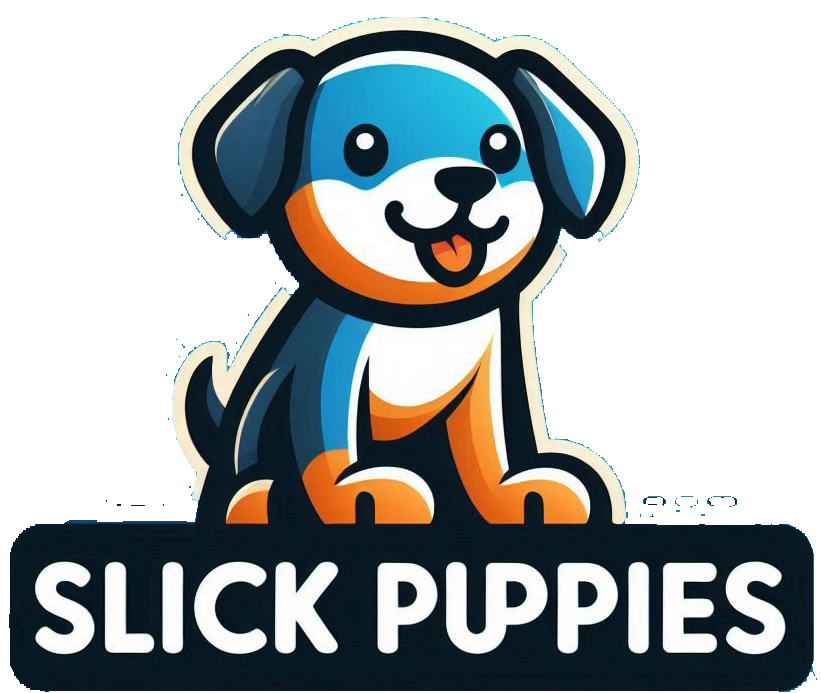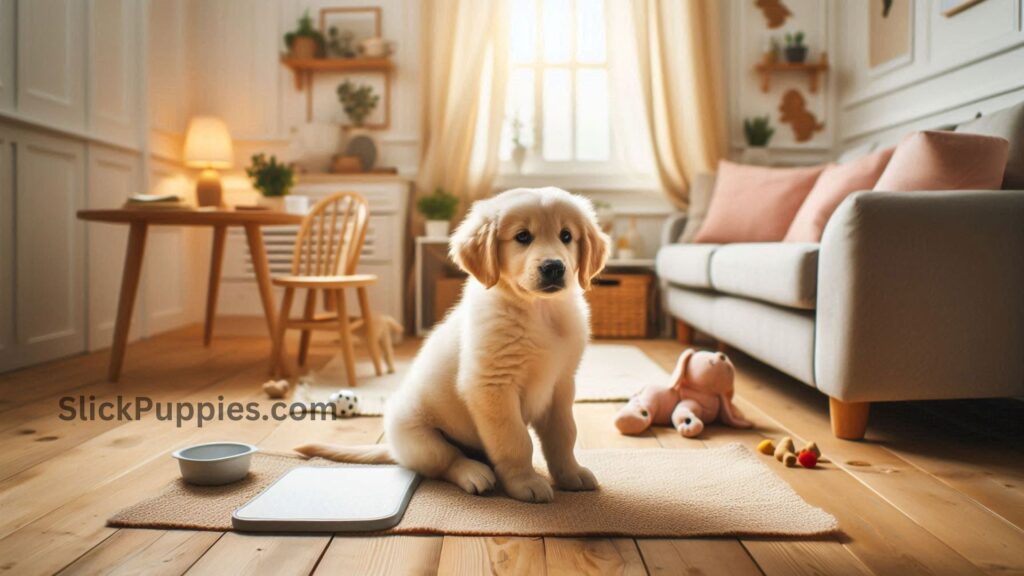House training your dog or puppy (also called potty training or housebreaking) takes patience, commitment, and consistency. Accidents will happen—it’s just part of the process. But don’t worry! By sticking to some simple house training tips, you’ll help your new furry friend settle in and get on the right track in no time.
How to Potty Train Your Puppy
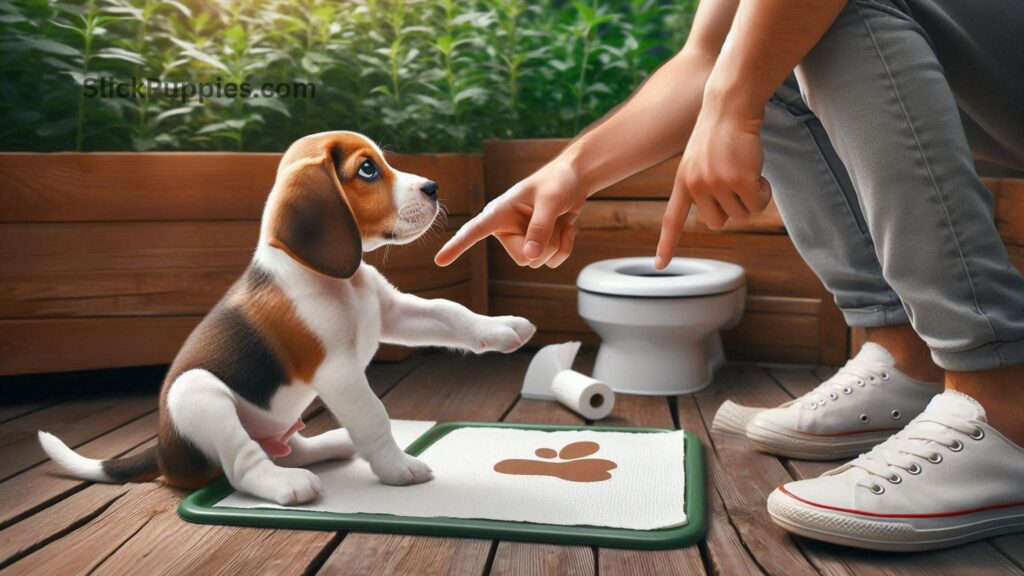
Establishing a Routine Made Simple
Puppies thrive on a regular routine. It helps them learn when it’s time to eat, play, and take care of business. Here’s a simple guideline: a puppy can usually hold their bladder for about one hour for every month of age. So, a 2-month-old puppy can wait around two hours. Don’t stretch it too long between bathroom breaks, though, or accidents will happen!
Take your puppy outside often—at least every two hours—and especially after they wake up, during or after playtime, and right after meals or drinking water.
Pick a specific bathroom spot outside and always take your puppy there on a leash. While they’re doing their business, use a word or phrase like “go potty” to teach them what you want. Once they’re done, reward them with a treat or lots of praise—but make sure you do it right after they finish, not when you’re back inside. Timing is key! If you praise them too early, they might get distracted and forget to finish.
Stick to a consistent feeding schedule for your puppy. Feed them at the same times every day, which will help them get into a rhythm and make house training easier. Depending on their age, they might need to eat two or three times a day.
To help with nighttime training, pick up their water dish about 2.5 hours before bedtime. This will lower the chances of late-night potty breaks. Most puppies can sleep around seven hours without needing to go outside. If your puppy wakes you up at night, keep things calm and boring—no lights, no talking, and no playtime. Take them to their bathroom spot, let them do their business, and then head straight back to bed.
With patience and consistency, you’ll have your puppy house-trained in no time!
Supervise Your Puppy
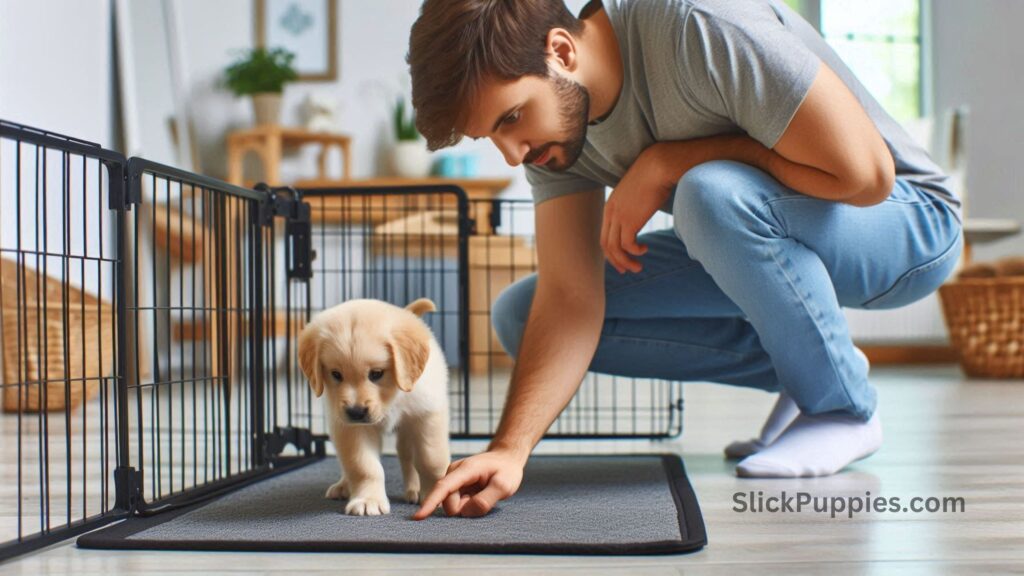
Keeping an Eye on Your Puppy
To prevent accidents in the house, always keep a close watch on your puppy when they’re indoors.
If you’re not actively playing with them or working on potty training, tether your puppy to you or a nearby piece of furniture using a six-foot leash. This way, you can keep them in sight and notice when they need to go. Look out for signs like barking, scratching at the door, squatting, sniffing, or circling. The moment you see any of these, grab the leash and take them outside to their designated bathroom spot. If they do their business, reward them with lots of praise and a treat—it reinforces the good behavior!
When you’re in the yard, keep your puppy on a leash during the housebreaking process. Think of your yard as just another “room” in the house until your puppy is fully house-trained. Once they’ve consistently learned where and when to go, you can start giving them more freedom both inside and outside.
Patience and consistency are key! Your puppy will get the hang of it with time.
When You Can’t Supervise, Confine
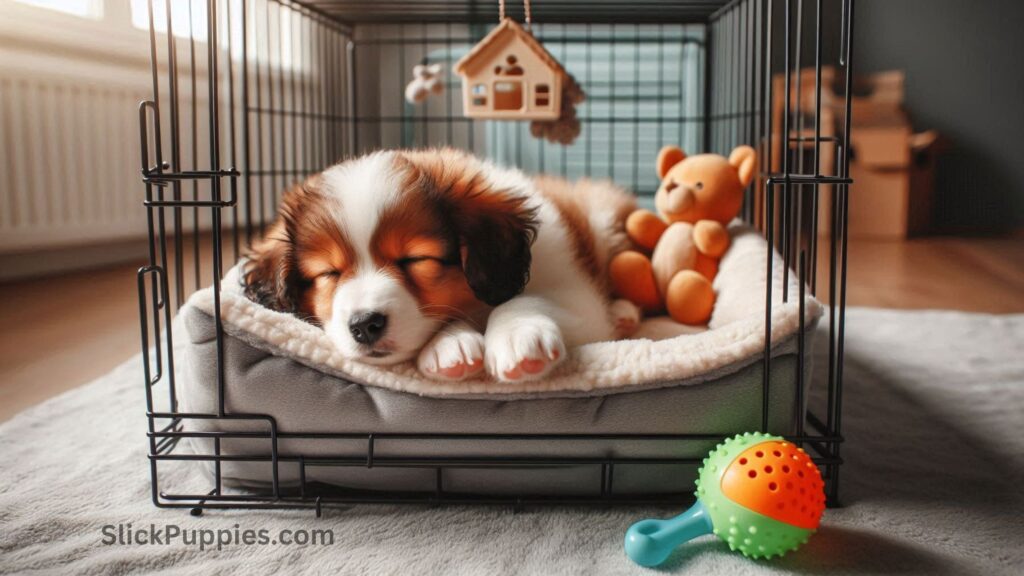
Managing Your Puppy When You Can’t Watch Them
If you can’t keep an eye on your puppy, limit them to a small area where they won’t want to go potty.
The space should be just big enough for them to stand, lie down, and turn around comfortably—nothing larger. You can use part of a bathroom or laundry room and block it off with baby gates.
Another option is crate training. Just make sure you learn how to use a crate safely and humanely—it’s meant to be a cozy spot, not a punishment. If your puppy has been confined for a few hours, take them straight to their bathroom spot as soon as you let them out.
With a little planning, this helps your puppy learn good habits while keeping accidents to a minimum!
Mistakes happen
Dealing with Accidents During Potty Training
Accidents are a normal part of potty training, so don’t stress when they happen. Here’s how to handle it:
If you catch your puppy in the act, calmly take them outside to their bathroom spot right away. If they finish there, praise them and give them a treat.
Never punish your puppy for going in the house. Don’t rub their nose in it, yell, or scold them—it’ll just make them scared of you or nervous about going potty when you’re around. Punishment only makes things worse.
Instead, focus on cleaning up the mess thoroughly. Puppies tend to return to spots that smell like urine or poop, so use a cleaner made for pet messes to get rid of any lingering odors.
To avoid accidents, keep a close eye on your puppy and use confinement when needed. If they’re allowed to go in the house too often, they might get confused about where they’re supposed to go, which can slow down the potty training process.
Patience and consistency are the keys to success! Your pup will learn with time.
Also Read: What Dog Breed is Best for Apartment Living?
Make Plans for When You’re Away
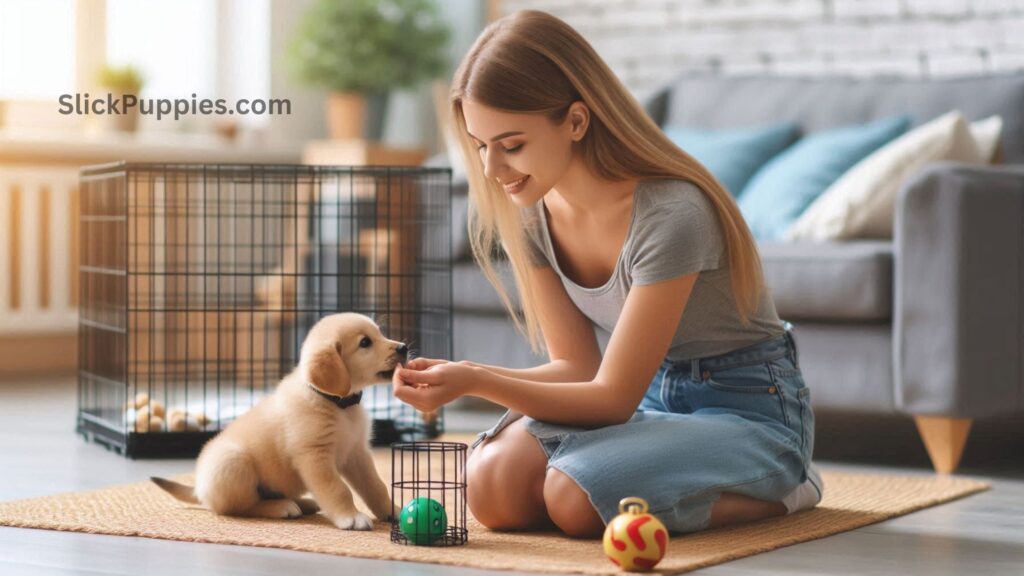
What to Do If You’re Away for Long Hours
If you’re away from home for more than four or five hours a day, it might not be the best time to get a puppy. Consider adopting an older, potty-trained dog who can handle longer periods alone.
However, if you already have a puppy and need to be away for long stretches, here are some options:
- Get Help: Ask a reliable neighbor, friend, or professional pet sitter to take your puppy out for bathroom breaks during the day.
- Indoor Potty Training: You can train your puppy to use a specific spot indoors for potty breaks, but keep in mind this might slow down house training. For example, if you teach your puppy to eliminate on newspaper, they might develop a preference for it and may go on any newspaper they see in the future.
- If you choose this method, set up a confined area with space for sleeping, playing, and a designated spot for eliminating. Use pee pads, layers of newspaper, or even a sod box (a container filled with sod, like a small plastic kiddie pool). Dog litter products are also available at pet stores.
- If your puppy has an accident outside the designated potty spot, place the soiled paper towels or rags in the correct area. This helps them associate the scent with where they’re supposed to go.
With a little planning and patience, you can help your puppy stay on track—even if you’re away for part of the day!
